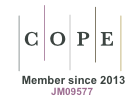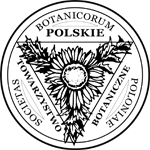Abstract
Percentage of ginsenosides in roots of American ginseng is ranged from 6.5 to 12.5%. 4-year-old roots are characterized by the highest content of ginsenosides. The highest amount of ginsenosides was found in ginseng leaves (24.8 - 37.5%). Stems and fruits of Panax quinquefolium are characterized by much lower content of saponins. Maximum level of ginsenosides, in case of leaves, stems and fruits, was observed in 4-year-old organs. The results show, that Polish ginseng for medicinal uses should be harvested from fourth year of plant vegetation. Qualitative TLC analysis showed presence of the same ginsenosides in the same ginseng organs in different age of plants. In ginseng rots were identified 6 compounds: Rb1, Re, Rc, Rd, Rg1 and Rg2, in leaves 7: Rb1, Rb2, Rc, Re, Rd, Rg1 and Rg2; in stems 6 ginsenosides: Rb1, Rc, Re, Rd, Rg1 and Rg2, instead in fruits 5 compounds: Rb2, Re, Rd, Rg1 and Rg2.
Keywords
Panax quinquefolium; American ginseng; ginsenosides; quantitative analysis; thinlayer chromatography (TLC)






